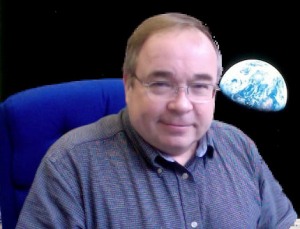Apr 21 2014
Research into using metamaterials in electromagnetics has already demonstrated an invisibility cloak. To take these ideas further into allied areas of advanced materials, £2.5 Think about the circular ripples caused when a pebble is thrown into a pond. A square rock in the water causes the circular pattern to be disturbed, creating a ‘shadow’ region to the right of the rock.
The disturbance in the circular pattern is how an observer on the right hand side of the figure ‘sees’ the objectmillion is being invested by the Engineering and Physical Sciences Research Council. Leading UK scientists based at LJMU, Imperial College London and the University of Liverpool will work on the five year study, that is uniquely positioned to span, and take advantage of, both mathematics and physics.
 Professor Ian Jones, Director of MEMARC
Professor Ian Jones, Director of MEMARC
Universities and Science Minister David Willetts said:
“Advanced materials is one of the eight great technologies of the future with the potential to propel UK growth. This investment will help us to develop further applications for metamaterials and reap the benefits of advanced materials for the wider UK economy.”
Researchers will apply concepts to fields such as acoustic metamaterials, thermal cloaking and to engineer designer metamaterials with specific properties.
Professor Ian Jones, Director of MEMARC based at the School of Engineering, Technology and Maritime Operations, is the lead investigator for LJMU. He commented:
“This large award brings together major players in the UK in the exciting new science of metamaterials and this investment by the UK Research Council will enable us to extend the mathematical foundation of the subject. It further recognises the capability within LJMU to answer fundamental questions in science.”
Professor Richard Craster, Imperial College London, said:
“This is an unusual and novel grant in metamaterials as it is centred around mathematical concepts and theory but nonetheless with considerable input from physics. The collaboration with our colleagues from the physics group, where metamaterials were originally developed, will provide unique insight and access to cutting edge ideas from physics that mathematicians can turn into solid rigorous theory. Conversely theoretical advances from mathematics can be fed directly and swiftly back into experiments and design.”
Metamaterials have unusual properties not seen in natural materials, for example light entering a metamaterial slab can be bent in the opposite direction to that expected.
Extending the concepts into thermal metamaterials could, for example, ultimately benefit laptop users. Currently, computer chips in laptops become hot, limiting the amount of transistors and computer power which can be put in a chip; thermal transfer could overcome this issue.
Metamaterials could provide a wide range of real-world applications where waves play a role, even potentially cloaking buildings from earthquakes. French collaborators on the project are already using cloaking principles in seismic wave systems to try and ‘hide’ buildings from ground vibrations caused, for example, by trains. Using multi-scale elastic metamaterials, large complex structures such as bridges or tall buildings can be designed to withstand earthquakes, and their possible swaying can be controlled. Novel shields and filters of elastic waves can be designed to divert the energy of earthquakes away from buildings and protected areas.
Creating a so-called ‘perfect lens’ using metamaterials could be used in bio-imaging applications. A perfect lens would enable light microscopes to see objects smaller than a single wave-length of light, such as a single virus. Currently only an electron microscope can image to this resolution with the drawback that cells need to be dead or frozen. A perfect lens created by metamaterials would allow scientists to break the so-called Rayleigh limit of diffraction.
The researchers will also look at the constraints of fabrication methods and use sophisticated tools of mathematics to develop optimal structures. Computer codes that take imperfections into account in an efficient way will be developed to allow the modelling and design of metamaterials to proceed together.
By the end of the research, scientists will develop proof of concepts, which can then provide a sound basis for the next stage of implementation.
Earlier LJMU research into invisibility cloaking can be viewed here
A paper relating to the study in the Proceedings of the Royal Society is in the list of the most downloaded papers of 2013
Videos linked to the research are available here